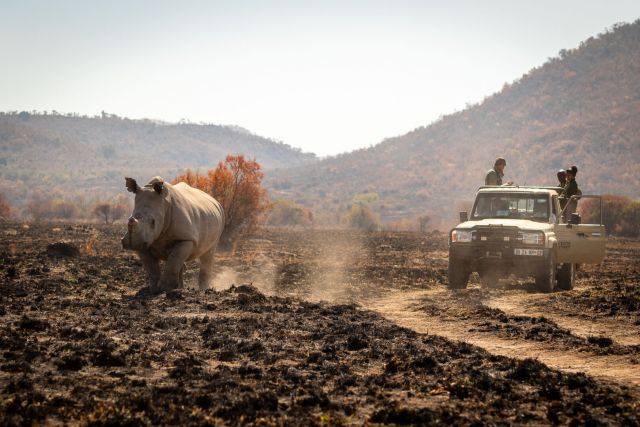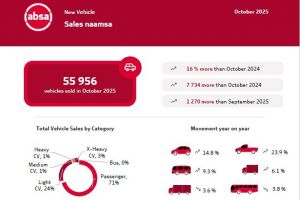
Strong demand drives SA to decade-high vehicle sales
The South African motor industry continues to defy expectations by posting another month of exceptional growth.
- Industry News
- 4 November 2025
Toyota South Africa Motors (TSAM), in collaboration with the Pilanesberg Wildlife Trust, recently executed a large-scale dehorning initiative at the Pilanesberg National Park.

To safeguard the rhino population, anti-poaching units must be both visible and mobile. In recent years, TSAM has donated vehicles, covered all service costs, and partnered with Monitor dealers to refurbish additional vehicles.
“Toyota's global environmental policy is robust, and we are proud of our long-standing partnership with the Pilanesberg Wildlife Trust. Protecting our heritage and safeguarding these majestic animals are integral to our mission. We are committed to playing our role in ensuring the survival of this endangered species for future generations,” says John Thomson, Vice President of Future Toyota.
Black and white rhinos face extinction owing to rampant poaching for their horns. These horns are often exploited as a symbol of wealth, either as ornate dagger handles, decorative displays on mantelpieces or for medicinal reasons.
Claims are that rhino horns have mystical powers when consumed as a powder, purportedly acting as an aphrodisiac. In reality, rhino horns are composed primarily of keratin protein, the same substance found in human fingernails, and have no proven medicinal or aphrodisiacal properties. It also has no cancer-curing properties.
In 2016, Northwest Parks initiated a dehorning programme for all rhinos. The procedure itself does not harm the animal in any way and the horn regrows. For now, this process has proven effective in deterring poachers.
“The rhino horn is not connected to the animal’s skeletal structure but grows from a growth plate above the bone. Dehorning, while essential, is an expensive procedure, TSAM managed to cover 70% of the costs of the recent dehorning process in the Pilanesberg.
“This support, along with donor funding and the Pilanesberg Wildlife Trust, contributes to wildlife veterinarians and assistants, helicopters and pilots for darting, medication for sedation and stabilisation, ground teams, vehicles as well as volunteers. This collective commitment to protecting these magnificent animals and conserving wildlife make these efforts possible,” says John.

The South African motor industry continues to defy expectations by posting another month of exceptional growth.

According to a Reuters report, Renault is engaged in active discussions with several automobile manufacturers, including China's Chery, as the French company explores opportunities for collaborative production and distribution agreements.

South Africa’s new-vehicle market continued its upward trajectory in October 2025, supported by easing inflation, a firmer rand, continued signs of improving consumer sentiment and demand recovery in key export markets.